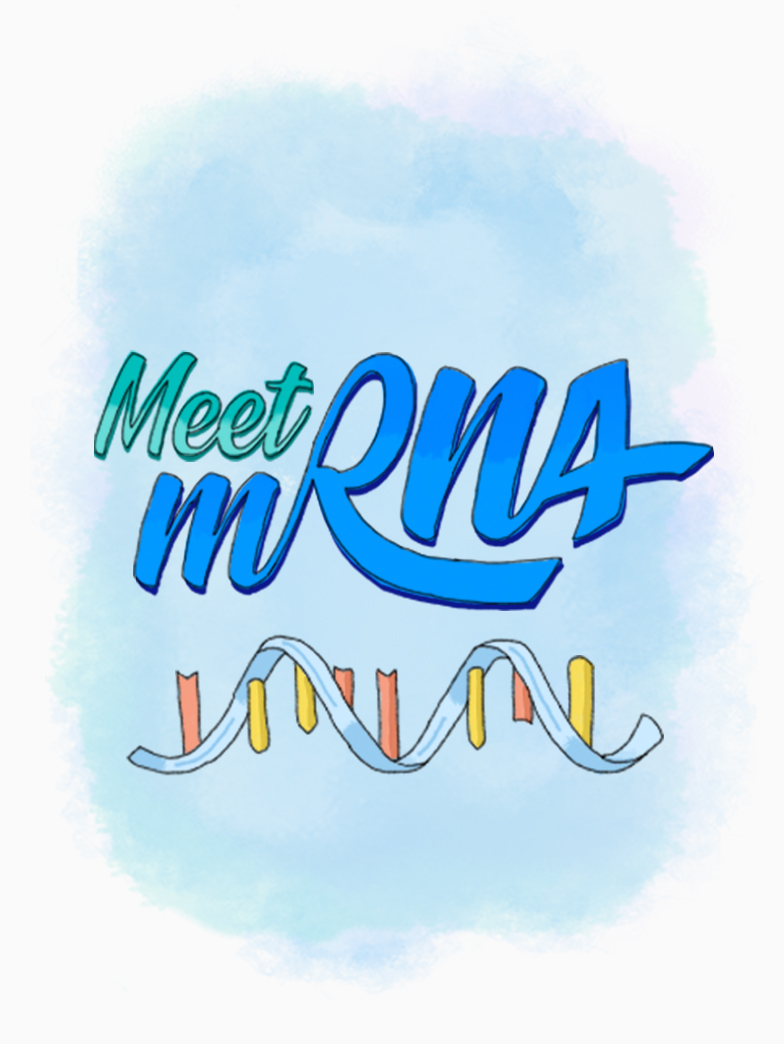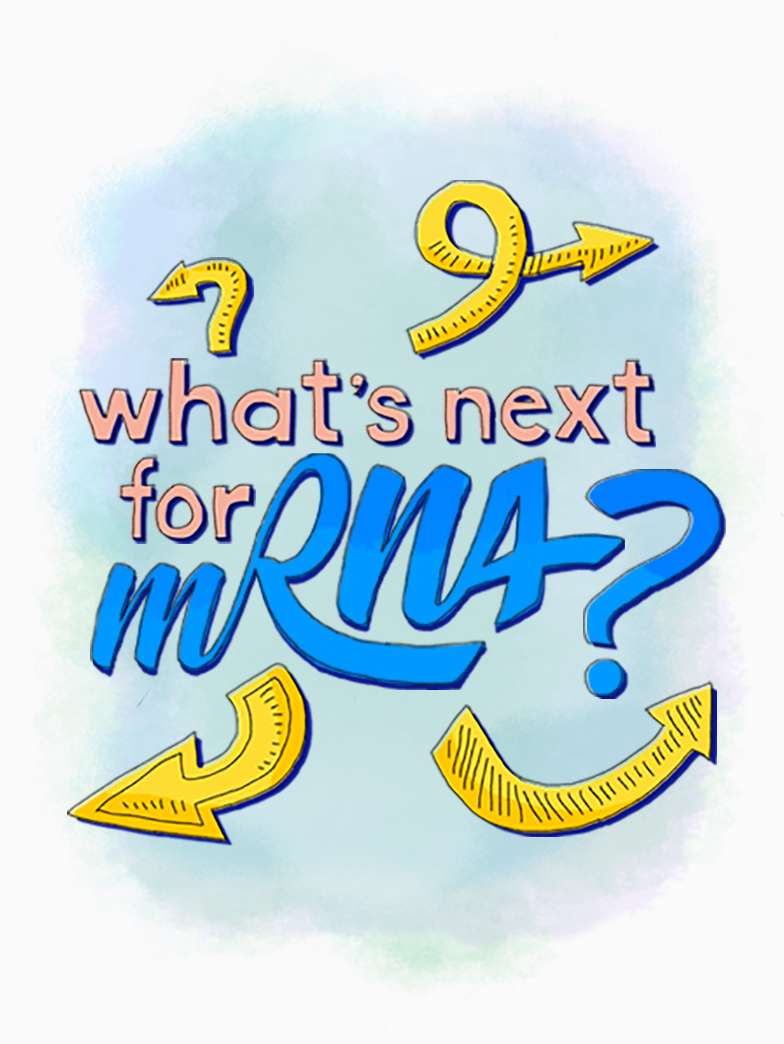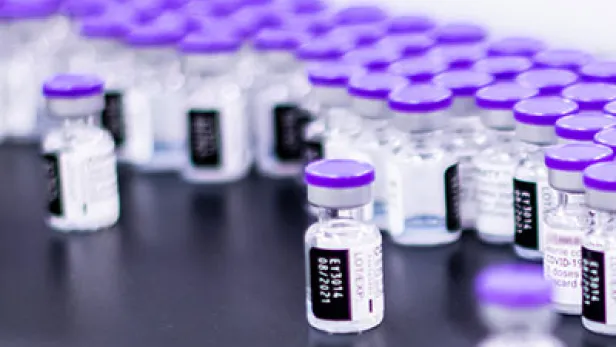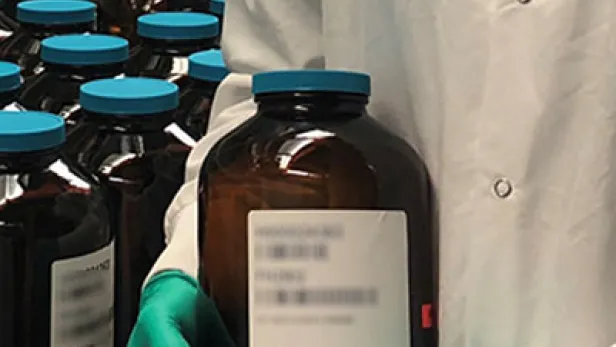Unleashing the Next Wave of Scientific Innovations to Fight Viruses and More
What is mRNA?
mRNA—or messenger RNA—is a molecule that contains the instructions or recipe that directs the cells to make a protein using its natural machinery. To enter cells smoothly, mRNA travels within a protective bubble called a Lipid Nanoparticle. Once inside, our cells read the mRNA as a set of instructions, building proteins that match up with parts of the pathogen called antigens. The immune system sees these foreign antigens as invaders—dispatching defenders called antibodies and T-cells—and training the immune system for potential future attacks. So, if and when the real virus comes along, the body might recognize it—sounding the alarm to help defend against infection and illness.

What You Need to Know About mRNA
- What does mRNA stand for?
mRNA stands for messenger RiboNucleic Acid and is the single stranded molecule that carries the instructions to make proteins. It has a fundamental and essential role that makes our bodies function and is found in all living cells.
- What are the origins and history of mRNA technology?
mRNA was first discovered in the 1960s by researchers François Jacob and Jacques Monod who were recognized with The Nobel Prize in Physiology or Medicine for their discovery. Since then, scientists have been studying mRNA for decades given its potential to be harnessed to prevent and treat a wide range of diseases. A lot of progress was made in the early 2000s after decades of continued research into mRNA, refinements, and technological advances. The groundbreaking work of Pieter Cullis helped develop lipid nanoparticles as systems to deliver therapies and vaccines, a key enabler for mRNA technology. Research partners Katalin Karikó and Drew Weissman at the University of Pennsylvania were able to engineer mRNA in a way that could get into cells without triggering the body’s defenses. That breakthrough enabled continued scientific advances that led to the development and authorization of the first mRNA vaccines for COVID-19 in 2020 and solidified the promise of the technology.
- How does mRNA work?
mRNA—or messenger RNA—is a molecule that contains the instructions or recipe that directs the cells to make a protein using its natural machinery. To enter cells smoothly, mRNA travels within a protective bubble called a Lipid Nanoparticle. Once inside, our cells read the mRNA as a set of instructions, building proteins that match up with parts of the pathogen called antigens. The immune system sees these foreign antigens as invaders—dispatching defenders called antibodies and T-cells—and training the immune system for potential future attacks. So, if and when the real virus comes along, the body might recognize it—sounding the alarm to help defend against infection and illness.
- How is mRNA related to DNA?
DNA and mRNA are two critical and essential molecules in biology; and without one or the other, we can’t live. DNA and mRNA work together to make our bodies function. They have unique but different roles to play. DNA stores all the genetic information in our bodies; mRNA carries that genetic information, similar to a blueprint or set of instructions, that are then translated into proteins.
- What mRNA vaccines exist?
mRNA was discovered in the 1960s and it was understood through decades of research, scientific progress, and development. Today, there are mRNA-based COVID-19 vaccines available, and a lot of ongoing research using this platform to identify new ways to prevent and fight many other infections and diseases.
- How is mRNA revolutionizing the development of new vaccines and treatments?
mRNA instructs cells in the body to make specific proteins, and proteins play many essential roles in our bodies. mRNA basically uses our own body and biological processes to potentially treat diseases and prevent infections.
- What formats of mRNA does Pfizer use?
Nucleoside-modified messenger RNA (modRNA): Our first approved mRNA vaccine, the Pfizer-BioNTech COVID-19 vaccine, utilizes modRNA. modRNA stands for nucleoside-modified messenger RNA and in the synthesis of the RNA used in this vaccine platform, some nucleosides, which are important biological molecules that constitute DNA and RNA, are replaced by modified nucleosides to help enhance immune evasion and protein production. modRNA instructs our cells to produce desired proteins. We are also leveraging modRNA in our investigational flu and shingles vaccines.
Self-amplifying mRNA (saRNA): saRNA is a platform that uses a much larger molecule because not only does it encode the antigen of interest, but four additional proteins. These extra proteins allow the cell to make more copies of the mRNA, resulting in more protein being expressed from a smaller dose. Pfizer is exploring, testing, and refining multiple constructs in order to advance saRNA technology, currently for its flu program.
The Science Behind mRNA
Explore the science behind mRNA and understand why we’re thinking differently about this technology and the promise it holds.
Behind the Science Features
Experience multimedia stories that give you an exciting view of Pfizer’s initiatives as we pursue breakthroughs that change patients’ lives.
Go Behind the Science DetailsClinical Trials
Learn more about the process of joining a clinical trial and find a trial near you.
Go to Pfizer Clinical Trials Site Details







